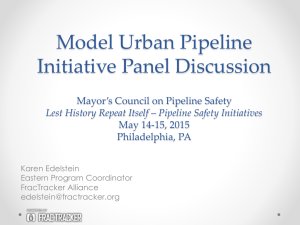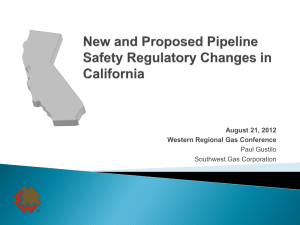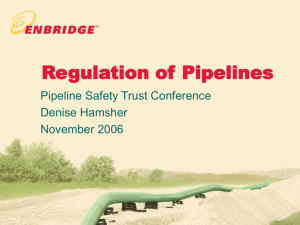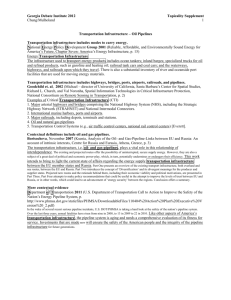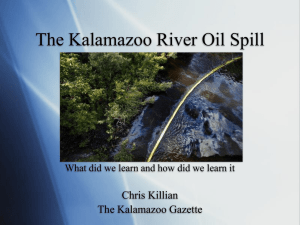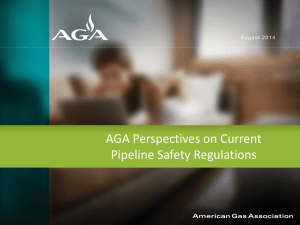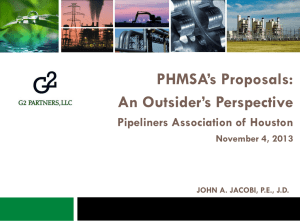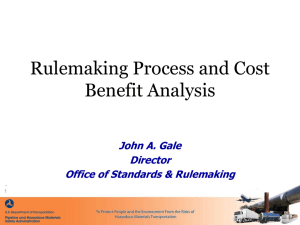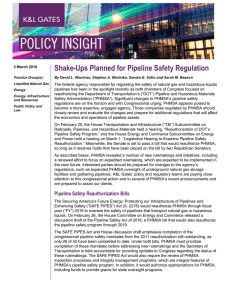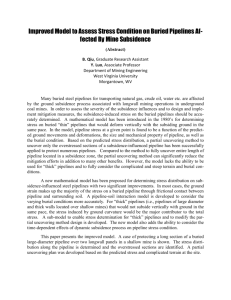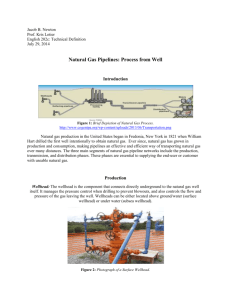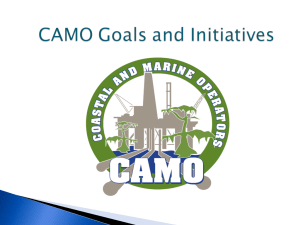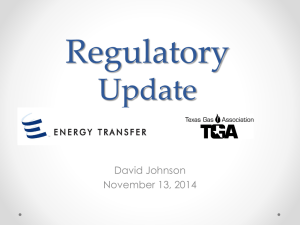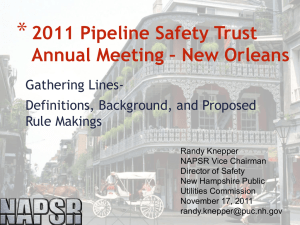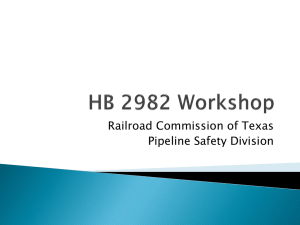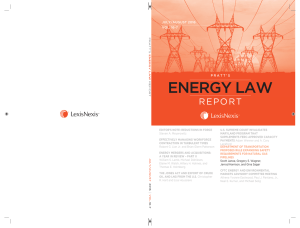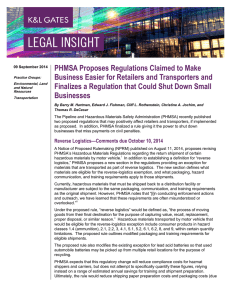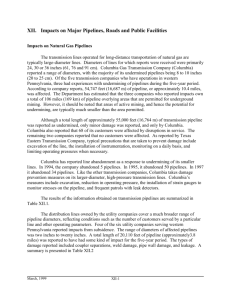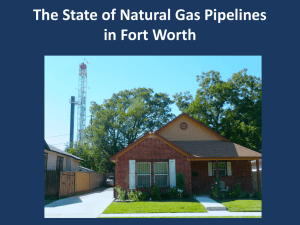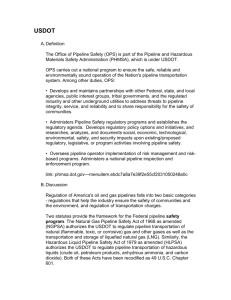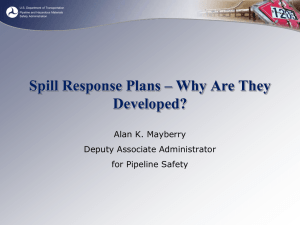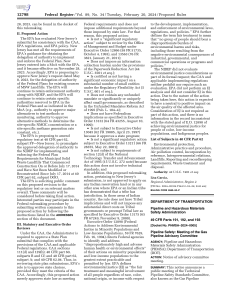Enough to avoid future tragedies?
advertisement
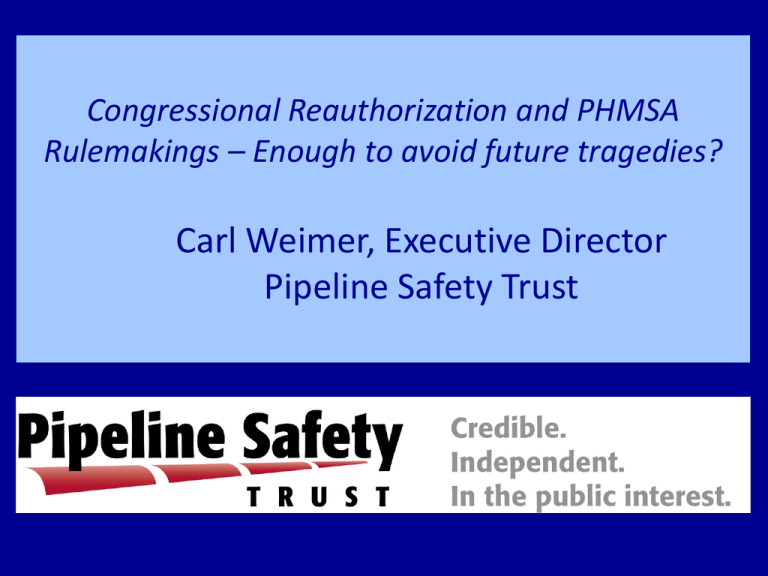
Congressional Reauthorization and PHMSA Rulemakings – Enough to avoid future tragedies? Carl Weimer, Executive Director Pipeline Safety Trust No! Thank You Any Questions? How pipeline safety change happens Step change improvements in regulations in the past 10 years • Integrity Management rules for Hazardous Liquid Pipelines • Integrity Management rules for gas transmission pipelines • Integrity Management rules for gas distribution pipelines Good things included in Congressional Bills • • • • • • Expanding miles of integrity management Automated Valves Leak Detection for liquid lines Verification of MAOP for gas transmission lines Improving Damage Prevention Transparency for HCAs, emergency plans, inspections, industry developed standards • Gathering lines & flow lines • Increased fines and more PHMSA employees Why expand miles of integrity management? • First 10 years of IM has caused thousands of flaws to be found and repaired. • Creates a process for focused risk analysis and measurable improvement • Thousands of people still live within impact areas of pipelines that are not required to use integrity management • 94% gas transmission pipelines • 56% hazardous liquid pipelines Why Automated Valves? • Quicker shut down to reduce damage and allow emergency response Why better leak detection for liquid lines? • Reduce the size and damage from spills by earlier detection Recent Examples Enbridge Spill – Kalamazoo River– 7/10 Chevron Spill – Salt Lake City – 6/10 Why verify MAOP for gas transmission lines? One of the NTSB findings in the San Bruno Tragedy was that PG&E lacked the records needed to justify the MAOP of the pipeline and the inspection methods being used. Why improve damage prevention? • Still a leading cause of deaths and injuries associated with pipeline incidents • Many states still lack effective programs to implement known solutions, and data collection to know how bad the problem is and where to target prevention money Why is greater transparency important? Provides another set of eyes from a different perspective. – If all is well - builds trust. – If something has been missed – may help correct Current Considerations: • Inspection results • High Consequence Areas • Emergency Response Plans • Industry developed standards While PHMSA has improved dramatically regarding transparency, many states lack even the basics http://pipelinesafetytrust.org/resources/StateTransparency.htm Why increase regulations for gathering lines? The huge increase in shale drilling, often in more populated areas, has caused thousands of miles of gathering lines to go into the ground in recent years. Many of these gathering lines are of the same size and pressure as gas transmission lines, but fall under considerably fewer regulations Why current Congressional actions won’t clearly prevent new tragedies? • Require few actual safety improvements - studies, studies, studies - huge loopholes - Most everything still needs to go through a PHMSA rule making - Industry heavy process - pass onerous cost/benefit analysis • Ignores some major problems Current & Proposed PHMSA Rulemakings • • • • • • Enforcement of State Excavation Damage Laws Safety of On-shore Hazardous Liquid Pipelines Safety of Gas Transmission Pipelines Control Room Management Excess Flow Valves On-shore gas gathering Can PHMSA Rulemakings make significant improvements? Yes, if • PHMSA has learned from recent incidents and NTSB recommendations • The industry doesn’t try to derail the process • “Getting to zero” and public safety are truly the highest priorities and the benefits don’t get lost in the costs. But, avoiding future tragedies and getting to zero incidents will take more than just Congressional action and PHMSA rulemaking! • The industry’s fine words about “getting to zero” needs to be followed up with real action that goes beyond what the regulations require! • The state regulators and rate setters also need to be fully engaged • The public, local government and the press needs to keep paying attention, taking names, and holding people accountable
